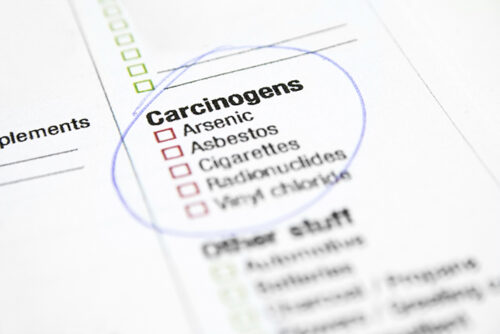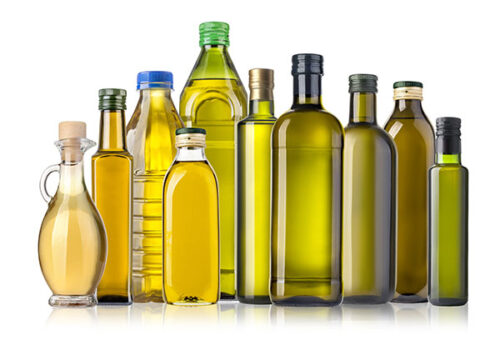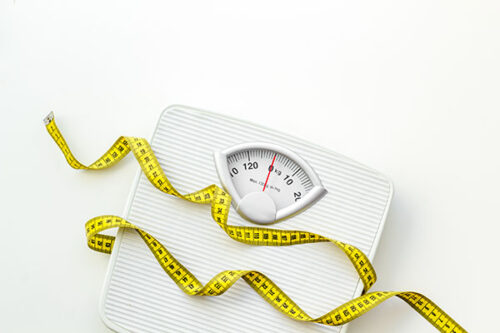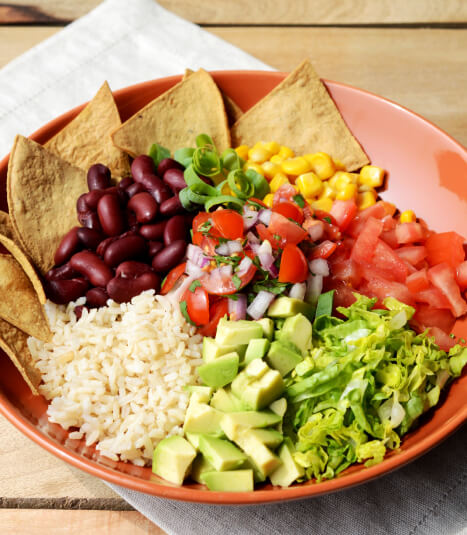Favorite 5 Articles from the June 2009 Newsletter
Favorite 5 Articles from Recent Medical Journals

Swine Flu Alert: Do Not Take Aspirin or Other NSAIDs
Two letters to the editor in the June 17, 2009 issue of the British Medical Journal warned of an increased risk of death with influenza from taking non-steroidal anti-inflammatory drugs (NSAIDs), which include aspirin (Bufferin, Bayer, Excedrin), ibuprofen (Advil, Motrin, Nuprin), ketoprofen (Actron, Orudis), and naproxen (Aleve). Death from influenza is from multi-organ failure (liver and kidney failure) and brain involvement (encephalopathy). In the first letter, Rokuro Hama, points out NSAIDs are well known to aggravate organ failure and there is evidence that the restriction of use of these medications is associated with a reduction of death from the flu.1 In the second letter, Tsunetoshi Shimazu, reminds the reader that during the 18 months of the 1918-9 influenza pandemic, 27 million people died worldwide.2 When treated with a homoeopathic medicine (without aspirin), mortality was 1% or less, but 5-30% of patients treated with aspirin in hospitals or in the armed forces died.
Comment: I have always recommended (and personally used) aspirin during bouts of influenza for symptom relief (fever, chills, body aches, and headaches.). However, with the appearance of more virulent viral strains, such as the swine flu, which in many ways resembles the flu of 1918, I am changing my recommendation.* Do Not Use NSAIDs (including aspirin) with influenza infections. For three decades doctors have known that when aspirin is given to children with viral infections they have an increased chance of developing an often-fatal condition of multi-organ failure called Reyes Syndrome. (I saw two young boys die from this condition during my early training.) With the restriction of aspirin use in children, Reyes Syndrome has become very rare.
So, what can be done for the flu? Not much. I hesitate to recommend any medications because they all have side effects and risks. Tylenol (acetaminophen) is likely the safest symptom reliever, but this medication is also not without risks. The safest advice would be to suffer through the flu rather than risk the medications. Antibiotics do not fight off viruses and should not be given unless there are bacteria-caused complications. Antiviral drugs, such as Tamiflu and Relenza, are of limited value because resistance has developed to them. The body has many ways of fighting off the invading viruses and repairing damage on its own. ‘Fluids and food’ as needed is my conservative advice. Your thirst drive and appetite will take proper care of your needs. If you become very ill you will need medical care. Advice on preventing infection is offered in my May 2009 newsletter.
A healthy person will be much more likely to survive the flu than someone burdened with chronic illnesses, like obesity, heart failure, and diabetes. So now is the time to prepare for your future and the future of your family. Get as much health stored up as you can by following a starch-based diet, moderately exercising, and getting adequate sunshine.
* I reserve the right to change my recommendations on any drug or surgical therapy, because the ‘facts’ are always changing and the limited data available on these treatments are heavily tainted by money from special interests. However, you will never find me changing my recommendations on diet, exercise, sunshine, clean air, clean water, and rest.
1) Hama R. NSAIDs and flu. BMJ. 2009 Jun 15;338:b2345.
2) Shimazu T. Aspirin in the 1918 pandemic. BMJ. 2009 Jun 15;338:b2398.
Red Yeast Rice Is an Alternative to Statins for Cholesterol-Lowering
Red yeast rice for dyslipidemia in statin-intolerant patients: a randomized trial by David J. Becker published in June 2009 issue of the Annals of Internal Medicine found, ‘Red yeast rice and therapeutic lifestyle change decrease LDL cholesterol level without increasing CPK or pain levels and may be a treatment option for dyslipidemic patients who cannot tolerate statin therapy.’1 In this study, 62 patients with elevated cholesterol and a history of discontinuing statin therapy because of muscle pains (myalgias) were assigned to receive red yeast rice, 1800 mg, or placebo, twice daily for 24 weeks. All patients were also enrolled in a 12-week therapeutic lifestyle change program. In the red yeast rice group, the total cholesterol decreased from 245 mg/dL to 209 /dL and LDL ‘bad’ cholesterol decreased from 163 mg/dL to 128 mg/dL in 24 weeks. In the placebo group the change was less (246 to 230 mg/dL and 165 to 150 mg/dL, respectively). There were no adverse effects, such as a rise in liver or muscle enzymes (CPK) indicating tissue damage, and no increase in muscle pain with the red yeast rice regime compared to placebo. Due to the diet and exercise program both groups attained and maintained a weight loss of about 8 pounds (3.6 Kg) over 24 weeks.
Comment: Red yeast rice is the product of a yeast (Monascus purpureus) grown on rice, which contains several active compounds. One of these, monacolin K, is a potent inhibitor of cholesterol synthesis in the liver, and is also known as mevinolin or the prescription drug, lovastatin (Mevacor®). One month’s supply of red yeast rice (1800 mg twice daily) can cost $20 to $30. The Mediterranean style diet taught to both groups lowered the cholesterol by an average of 16 mg/dL in the placebo group. Therefore, the red yeast rice caused an additional reduction of 20 mg/dL in 24 weeks (total reduction of 36 mg/dL with diet and drug). The amount of active ingredient in the red yeast rice was equivalent to 6 mg of lovastatin.1 The usual dose of lovastatin prescribed by physicians is 20 to 40 mg. This study confirms what other studies have shown; red yeast rice is an effective cholesterol-lowering medication.
The unique finding in this study was that red yeast rice did not cause adverse effects in patients who had previously stopped taking a statin because of adverse effects, including muscle pains. In general practice, about 10% of patients stop taking this kind of medication because of muscle pain. More severe muscle inflammation (called myositis) occurs in 1% to 5% of people on these medications. The more potent the statin, the greater the risk of muscle damage. A recent study, using an electron microscope and biochemical tests, examined the muscle tissues of patients on statins, and found evidence of muscle cell damage in over 70% of people on statins, even when they had no complaints of muscle pain.2
One important conclusion of this study in which 31 people took red yeast rice, is that it is effective and safe. The effectiveness is clear, but the proof for safety is not unquestionable. The number of people tested was small and so was the dosage of medication used (6 mg vs. 20 to 40 mg of lovastatin). There have been previous reports of severe muscle and liver damage with the use of red yeast rice.1 Therefore, you should not believe that this ‘natural’ product is without risk, but it may be an alternative for people reacting adversely to prescription medication and who do need treatment.
One recent study of a partially purified extract of red yeast rice on Chinese patients who had suffered a previous heart attack showed an absolute 4.7% reduction in nonfatal heart attacks and death from coronary heart disease compared to placebo.3 The effects of very powerful doctor-prescribed statins (Mevacor, Zocor, Lipitor, and Crestor) have been tested in thousands of people and the general finding is that the benefits are primarily limited to people with a high risk of future heart attacks or stroke.4,5 People who are otherwise healthy do not significantly benefit from these medications, but still do suffer the usual side effects and costs from statins. Cholesterol-lowering medications must be taken for years and many times for life; when statins, even red yeast rice, are stopped the cholesterol quickly rises to pretreatment levels (unless the patient has changed their diet since starting the medication).
Red yeast rice is effective and appears to be better tolerated by some patients than doctor-prescribed statins. But it is not necessarily cheaper. Prescriptions are often covered by insurance, and at Walmart a 30-day supply of lovastatin (10 and 20 mg) or pravastatin (10, 20, and 40 mg) can be purchased for $4; compared to $20 to $30 for a month’s supply of much less potent red yeast rice. In favor of red yeast rice, prescriptions require your time and money for a doctor’s visit.
Like other cholesterol-lowering statins, use should be limited to those likely to attain more good than harm—and these are people at high risk of a future vascular tragedy (for example, people with a previous history of a heart attack, angioplasty, bypass surgery, TIA, or a stroke). Sufficient amounts of cholesterol-lowering medication should be taken in order to reduce the blood cholesterol level to below 150 mg/dL. The reason for a goal of 150 mg/dL or less is that this level is associated with a low risk of vascular disease and a very good chance of healing the arteries. If side effects, like muscle pain, occur, then the medication should be stopped immediately (under doctor’s supervision). Above all, medication should not be considered as a replacement to correcting the underlying cause of the problem—in this case, the rich Western diet causes artery disease (atherosclerosis).
1) Becker DJ, Gordon RY, Halbert SC, French B, Morris PB, Rader DJ. Red yeast rice for dyslipidemia in statin-intolerant patients: a randomized trial. Ann Intern Med. 2009 Jun 16;150(12):830-9, W147-9.
2) Draeger A, Monastyrskaya K, Mohaupt M, Hoppeler H, Savolainen H, Allemann C, Babiychuk EB. Statin therapy induces ultrastructural damage in skeletal muscle in patients without myalgia. J Pathol. 2006 Sep;210(1):94-102.
3) Lu Z, Kou W, Du B, Wu Y, Zhao S, Brusco OA, Morgan JM, Capuzzi DM; Chinese Coronary Secondary Prevention Study Group, Li S. Effect of Xuezhikang, an extract from red yeast Chinese rice, on coronary events in a Chinese population with previous myocardial infarction. Am J Cardiol. 2008 Jun 15;101(12):1689-93.
4) Abramson J, Wright JM. Are lipid-lowering guidelines evidence-based? Lancet. 2007 Jan 20;369(9557):168-9.
5) Kendrick M. Should women be offered cholesterol lowering drugs to prevent cardiovascular disease? No. BMJ. 2007 May 12;334(7601):983.
Meat Kills People and Planet Earth
Meat intake and mortality: a prospective study of over half a million people by Sinha Rashmi in the March 23, 2009 issue of the Archives of Internal Medicine reported that, ‘Red and processed meat intakes were associated with modest increases in total mortality, cancer mortality, and cardiovascular disease mortality,’ after studying the illnesses of a half million people aged 50 to 71 years and their diets based on a food frequency questionnaire.1 The authors postulated several mechanisms for the harms from red and processed meat. In relation to cancer, meat is a source of cancer causing chemicals (carcinogens), and a major source of saturated fat, which has been positively associated with breast and colorectal cancer. In relation to heart attacks and strokes, red and processed meat are causally related to elevated blood pressure, cholesterol, artery disease, and a tendency to form blood clots.
Comment: If he knows all these facts, why is Barry Popkin not a vegetarian? Why does he recommend that doctors keep prescribing small amounts of poisonous food to people? Is he embarrassed to be a vegetarian? Does he want to appear sensible, not radical, professionally proper, and politically correct? He seems unwilling to stand up for what he obviously knows to be right. This is no time to act meek.
This article and the accompanying editorial made worldwide headlines and hopefully will make a major contribution to people’s health and to saving our planet. Two decades ago almost no one understood the damaging role that meat played. Now most people are aware. The US government has finally recognized the importance of global warming and has begun serious discussions about removing subsidies and changing tax policies that favor the polluters. Healthcare is currently one of the hottest political topics in the US—I predict the insurance and pharmaceutical companies will be the big losers—and we will be the winners. Hopefully, Mr. Obama will find my recommendations from my November 2008 Newsletter worthwhile:
1) Identify the livestock and processed food industries as the major cause of death and disability in the US.
2) Levy taxes on health-damaging foods.
3) Require product-warning labels on meat, dairy and other hazardous foods, like the warnings that are now on tobacco products. ‘Meat Pollutes Streams, Rivers, and Oceans’ and ‘Cheese Causes Heart Disease.’
4) Educate doctors and dietitians about diet-therapy, and how to take people off medications.
5) Require all hospitals to serve healthful foods.
6) Allow lawsuits to go forward against food industries.
7) Require the meals served to the military, schools, and all government subsidized programs to be starch-based.
8) Require the treatments provided under the new government insurance plan be proved effective and safe. (Overnight, this act will stop most heart surgeries and aggressive diabetic treatments for type-2 diabetics.)
9) Require diet-therapy to be the first line of therapy for all dietary diseases (heart disease, diabetes, arthritis, multiple sclerosis, indigestion, constipation, etc.)
10) Launch a massive advertising campaign on the truth about food, drugs, and devices to counteract the years of lies taught to us by industry.
1) Sinha R, Cross AJ, Graubard BI, Leitzmann MF, Schatzkin A. Meat intake and mortality: a prospective study of over half a million people. Arch Intern Med. 2009 Mar 23;169(6):562-71.
2) Popkin BM. Reducing meat consumption has multiple benefits for the world’s health. Arch Intern Med. 2009 Mar 23;169(6):543-5.
Fish Is Not Brain Food
Dietary intake of fish and omega-3 fatty acids in relation to long-term dementia risk by Elizabeth E Devore published in the July 2009 issue of the American Journal of Clinical Nutrition found, ‘In this Dutch cohort, who had a moderate consumption of fish and omega-3 PUFAs, these dietary factors do not appear to be associated with long-term dementia risk.’1 This study of 5395 people, 55 years of age or older, for 10 years, found people who never ate fish had a similar risk of developing dementia, including Alzheimer’s Disease, as those people who had a high fish intake (on average, one ounce—29.6 grams—daily). In the same issue of this journal, researchers reported on the findings of the Canadian Study of Health and Aging.2
A disturbing report was released on June 17, 2009: Bovine Spongiform Encephalopathy and Aquaculture by Robert P. Friedland published in the Journal of Alzheimer’s Disease.3 Scraps from slaughterhouses are used as food in the fish farming industries, and the authors of this report are concerned that consumption of farmed fish may provide a means of transmission of infectious prions from cows with bovine spongiform encephalopathy to humans, causing variant Creutzfeldt Jakob disease—commonly known as ‘mad cow disease.’ These scientists urged government regulators to ban feeding cow meat or bone meal to fish until the safety of this common practice can be confirmed. The publication of this important news comes before a new FDA rule that would block the feeding of rendered cows to certain animals, but not fish.
Comment: Fish is not health food. The truth is fish is an animal muscle made up primarily of proteins and fats, with no carbohydrates or dietary fibers—fish muscles are nutritionally just like the muscles of cows and chickens. They are all loaded with cholesterol and chemical contaminants, and deficient in vitamin C. Fish-fat easily accumulates in the human buttocks, thighs, and abdomen, leading to obesity and type-2 diabetes. All that excess animal protein will cause bone loss (osteoporosis), and the pharmacological activity of the fats (omega-3) will suppress the immune system (cancer and infection) and cause bleeding.
Fostering the myth that fish is a miracle food is a slogan many of us grew up with, ‘better living through chemistry.’ In the case of fish, the miracle chemical is omega-3 fatty acids, which have been advertised to prevent and treat diseases ranging from Alzheimer’s disease to strokes. The most thorough review ever conducted (48 randomized controlled studies of 36,913 subjects) of fish and omega 3 fats on health was published in the April 2009 issue of the British Medical Journal and the authors reported, ‘Long chain and shorter chain omega 3 fats do not have a clear effect on total mortality, combined cardiovascular events, or cancer.’4 Other research explains the origin of the felonious belief that fish is health food: people who choose fish are the same people who choose an overall healthier diet, consciously avoiding coronary-artery-damaging saturated fats—eating the fish does not prevent heart attacks, it is the not eating beef, chicken, and cheese that saves lives.5
The erroneous belief that these magnificent swimming animals will improve the health of people is at the root of the decimation of our oceans. People are eating more food from the sea every year and the result is industrial fishing has depleted the world’s fish stocks by 90% since the 1950s.6 I love the ocean and am saddened by this loss. Fortunately, I am not demented (from lack of fish consumption) and neither are you. We can stop this runaway destruction of planet Earth and return health to its entire species—but we must act quickly. One major step is to reintroduce the natural human diet of starches to people. If you want to know more about this one big simple solution then read the first chapter of my new book, The Starch Solution (to be published in about a year).
1) Devore EE, Grodstein F, van Rooij FJ, Hofman A, Rosner B, Stampfer MJ, Witteman JC, Breteler MM. Dietary intake of fish and omega-3 fatty acids in relation to long-term dementia risk. Am J Clin Nutr. 2009 Jul;90(1):170-6.
2) Krüger E, Verreault R, Carmichael PH, Lindsay J, Julien P, Dewailly E, Ayotte P, Laurin D. Omega-3 fatty acids and risk of dementia: the Canadian Study of Health and Aging. Am J Clin Nutr. 2009 Jul;90(1):184-92.
3) Friedland RP, Petersen RB, Rubenstein R. Bovine Spongiform Encephalopathy and Aquaculture. J Alzheimers Dis. 2009 Mar 6. [Epub ahead of print]
4) Hooper L, Thompson RL, Harrison RA, Summerbell CD, Ness AR, Moore HJ, Worthington HV, Durrington PN, Higgins JP, Capps NE, Riemersma RA, Ebrahim SB, Davey Smith G. Risks and benefits of omega 3 fats for mortality, cardiovascular disease, and cancer: systematic review. BMJ. 2006 Apr 1;332(7544):752-60.
5) Cundiff DK, Lanou AJ, Nigg CR. Relation of omega-3 Fatty Acid intake to other dietary factors known to reduce coronary heart disease risk. Am J Cardiol. 2007 May 1;99(9):1230-3.
6) Myers RA, Worm B. Rapid worldwide depletion of predatory fish communities. Nature. 2003 May 15;423(6937):280-3.
A Vegan (No Milk) Diet Is Healthy for Bones
Veganism, bone mineral density, and body composition: a study in Buddhist nuns by L.T. Ho-Pham published in the April 2009 issue of the journal Osteoporosis International found, ‘although vegans have much lower intakes of dietary calcium and protein than omnivores, veganism does not have (an) adverse effect on bone mineral density and does not alter body composition.’ This study examined 105 postmenopausal Mahayana Buddhist nuns, and compared them to 105 omnivorous women (average age of women in both groups was 62 years-old). The nuns were randomly sampled from monasteries in Ho Chi Minh City, Vietnam; they had been on a vegan diet, on average, for 33 years. The density of the nuns’ lumbar spine and femoral neck (hip) bones were found to be similar to those of the animal-food-eating women (omnivores).
The animal-food-eating women consumed twice the calcium as the nuns (682 vs. 330 mg/day). Total protein intake was twice as great in the animal-food-eaters (62.6 vs. 35.4 grams/day), and they ate 17 times more animal protein (34.6 vs. 2.1 grams/day). There was no significant difference in weight, height, body mass index, or exercise between the two groups. However, the nuns went through menopause almost 2 years earlier (47.8 vs. 49.6 years). Most important, but not commented on by the authors, was the finding that the animal-food-eating women consumed far more calories (1486 vs. 1130 Calories/day).
Comment: The greater calorie intake of the animal-food-eating women indicates they were much more physically active and that extra activity alone should have caused significantly greater bone mineral density than the less active nuns. But that was not the case. The observation that the bone density was equal in both groups is testimony for the bone-building (bone-preserving) effects of a vegan diet. The greater physical activity in the animal-food-eating women partially compensated for the bone losing effects of the animal protein in their diet. Osteoporosis is primarily due to the rich Western diet. Highly acidic proteins found in animal foods tear down the skeleton over decades.
Bone loss is reversible by fixing the cause. Everyone, and especially people with osteoporosis and a lesser condition, osteopenia, should eat a low-acid starch-based diet (with some restriction on grains and legumes, which are slightly acidic) and exercise. Focus on a diet plentiful in sweet potatoes, potatoes, winter squashes, with the addition of fruits and green and yellow vegetables. For more information on osteoporosis see my Hot Topics.
Ho-Pham LT, Nguyen PL, Le TT, Doan TA, Tran NT, Le TA, Nguyen TV. Veganism, bone mineral density, and body composition: a study in Buddhist nuns. Osteoporos Int. 2009 Apr 7.
Recommended Articles

Arsenic In Rice

When Friends Ask: Why Do You Avoid Adding Vegetable Oils?






